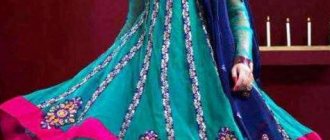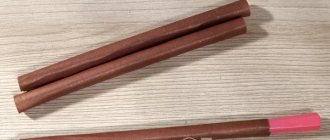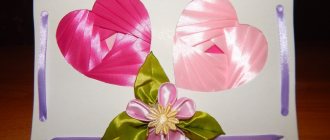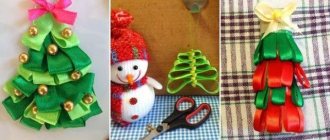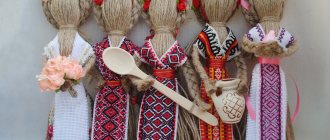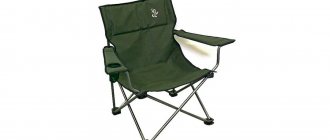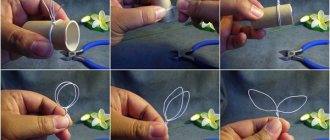How to make a flannelgraph with your own hands
Hello, friends! Are you familiar with the word “flannelograph”? This is a wonderful visual aid for conducting educational activities and didactic games with young children. Today we will not only tell you how to make a flannelgraph with your own hands, but also recommend what interesting and exciting games you can play with your child using it.
What is flannelograph
Flannelgraph is plywood or cardboard covered with flannel. It is installed on a table or floor (depending on size) at a slight angle. Various pictures and figures for activities are attached to the flannelgraph using double-sided tape, adhesive tape or the same flannel.
Instead of flannel, you can use fleece or carpet; these materials also hold pictures and even small objects well.
Flannelograph is a tool that is used for teaching children from 6 months to 5–6 years. It can serve as a convenient stage for a home cardboard theater, or be used instead of a magnetic board for various educational games.
How to make a flannelgraph
Even a novice craftswoman can make a flannelgraph. Do not forget that the little one should also take part in the production of the manual, performing simple work.
So, in order to make a flannelgraph, you will need the following materials:
- a sheet of thick cardboard, fiberboard or plywood;
- a piece of plain flannel or fleece;
- "lightning";
- scissors, sewing machine.
We recommend that you make two flannelographs: a larger one for an adult (it will be convenient to show assignments on it) and a smaller one for a child.
- Prepare a cardboard or plywood base of the required size.
- From flannel or fleece, cut out a flap twice as large as the base. Don't forget about seam allowances.
- Fold the fabric in half with the right sides facing in and sew the sides together using a machine.
- Turn the resulting cover inside out and sew a zipper into its upper part.
- Place the cover on a cardboard or plywood base. The flannelgraph is ready.
The zippered cover is convenient because it can be removed and washed if the need arises.
How to make a “travel” flannelgraph
The flannelgraph is an excellent tool for teaching your baby while traveling or on vacation. You can even take a small folding flannelgraph with you to the clinic to make waiting for a doctor’s appointment less tiring for your child.
Here's what you can use to make a “road” version:
- universal household napkins;
- sheets of thick paper or cardboard;
- braid;
- Velcro tape;
- scissors, sewing machine.
Making flannelgraph:
- Place a sheet of cardboard or thick paper between two napkins.
- Sew all four sides using a sewing machine.
- Decorate the edges of the flannelgraph using braid.
- Prepare two more sheets in the same way.
- Connect the sheets together with adhesive tape to create something like a folding book.
The mini-flannelograph for travel is ready.
How to make pictures and figures for flannelgraph
Pictures and figures for flannelgraph can be made in several ways:
- Download from the Internet and print on a printer.
- Cut from cheap children's books.
- Use children's pictures and stickers.
You can also make funny characters from children's drawings. The kid will be delighted when his drawings “come to life” on the surface of the flannelgraph.
For durability, each picture must be glued to cardboard, “laminated” with tape on top and the edges carefully trimmed.
You can cut geometric shapes, numbers, letters, as well as various elements for appliques from multi-colored felt.
How to fix pictures on a surface
Figures, pictures and other elements that you will use for classes should be held well on the surface of the flannelgraph and not slide off. To do this, you will need to think about the mounting system.
On the back of the pictures you need to stick a small piece of the following materials:
- velvet paper;
- corduroy;
- fleece or flannel.
Some people recommend using Velcro tape to secure pictures and figures. Of course, with its help, all elements will be securely fastened. But “Velcro” will very quickly render the flannelgraph coating unusable, making a lot of “puffs” on it.
Educational games and activities with flannelgraph
Even such a simple activity as hooking and then removing pictures from a flannelgraph will bring pleasure to the baby. But this manual can be used for educational activities.
Math assignments
Cut out geometric shapes of various sizes from colored cardboard. Fixing them one by one on the surface of the flannelgraph, explain to the child: “this is a square”, “this is a rectangle”, “this is a circle”, etc. Let the child put the same figures on his small flannelgraph.
At the same time, repeat the colors with the child, asking: “What color is the square?”, “Where is the yellow circle?” and so on.
By setting up two figures of different sizes, you can explain to the toddler the concepts of “larger” and “smaller”.
Using a flannelgraph it is convenient to teach your baby to count. Fasten, for example, three squares, five triangles, two circles. Let the child count the figures and put the correct number next to them.
Show your little one how to make simple drawings from geometric shapes: a snowman, a Christmas tree, a train, a house, a tree.
Logical thinking tasks
Here are just a few logic games that we chose from the whole variety:
Find the cub. Place pictures with adult animals on the surface: cow, cat, dog, elephant, etc. Arrange pictures with cubs in a chaotic order. Hand the little one a few pieces of ribbon and offer to pass them from mother to child. Be sure to ask your baby to call the cubs correctly: “calf”, “puppy”, etc.
Who eats what? You will need pictures of animals and what they eat. The kid must not get confused and feed the bear with honey, the chicken with grains, the bunny with carrots, etc.
Borscht or compote. Attach pictures with various fruits and vegetables to the flannelgraph, and place two pans with the inscriptions “borscht” and “compote” in the corners. The child must correctly name the vegetables and fruits, sort them into pots and justify his choice.
Find the odd one out. Attach several pictures to the flannelgraph, one of which will be redundant. The child must find and remove it, and name the remaining objects on the board in one word.
Put them in order. Prepare comic-style pictures, mix them up and hand them to the little one. He must arrange the pictures in a logical sequence and come up with a short story based on them.
Creative tasks
The flannelgraph gives a lot of scope for the creativity of the little man.
Applications. Prepare various elements from which your child can make appliqués: petals, stems and leaves of flowers, clouds and the sun, parts from which you can put together a car, animals, birds, people.
Rope drawings. Take a rope that will “cling” well to the surface of the flannelgraph, cut it into pieces of different lengths and paint it in different colors. Let the baby “draw” pictures with a rope - everything that his imagination tells him. Using a rope, you can “write” letters and numbers on the flannelgraph.
Puppet show. With the help of a flannelgraph, you can perform a performance based on any fairy tale or book, you just need to prepare the scenery and actors. If you attach cardboard stands to some of the figures, they will be able to “walk” from the stage to the table surface during the performance. Invite your child to come up with a short play himself and act it out on a flannelgraph.
Flannelograph - a universal aid
The main advantage of flannelgraph is that it is easy to manufacture and requires virtually no material costs. But this manual provides great assistance in the development and upbringing of the baby:
- develops creative and logical thinking;
- promotes the development of motor skills of hands and fingers;
- develops speech, enriches vocabulary;
- allows you to have fun and productive time with adults.
We hope, our dear readers, that from now on the flannelgraph will become an invariable attribute of your games and activities with your little one.
Good luck to you, friends! Goodbye!
Source: //nii-evrika.ru/kak-sdelat-flanelegraf-svoimi-rukami/
